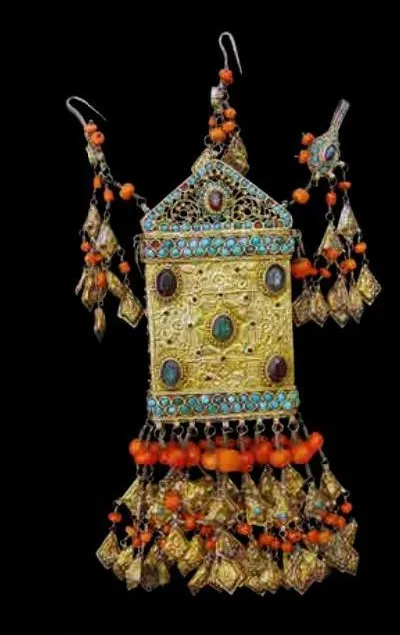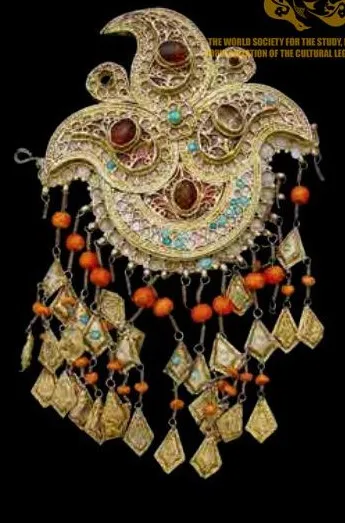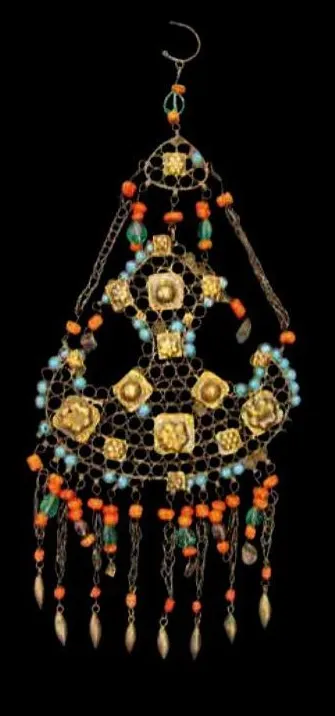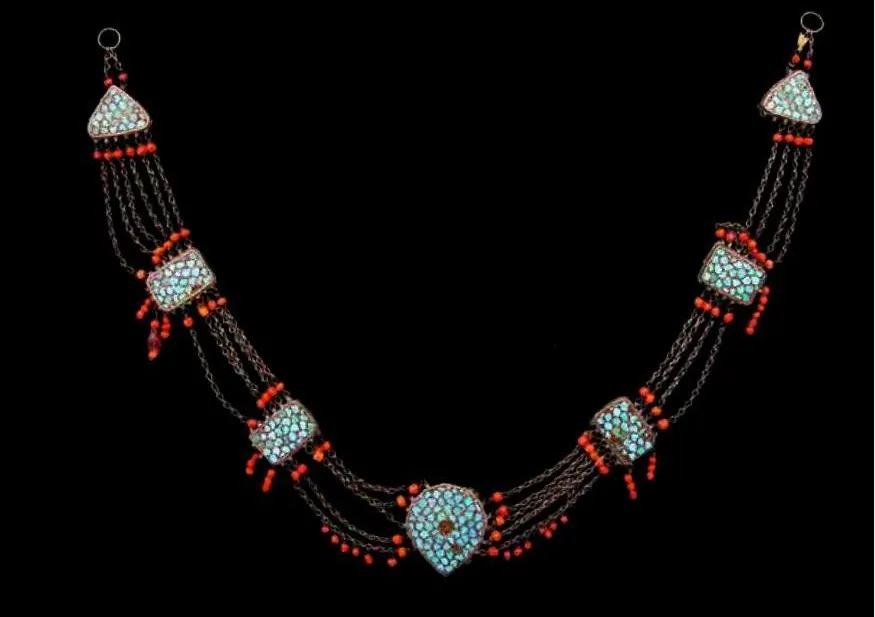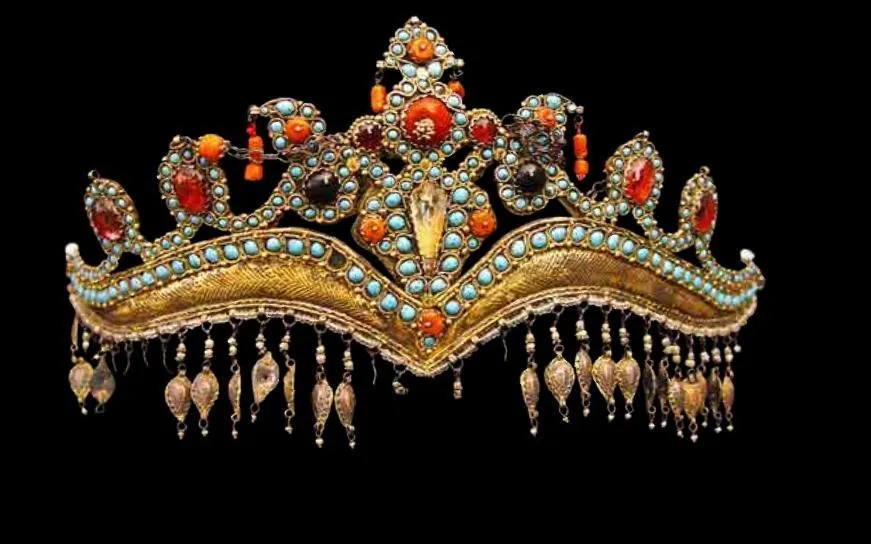Often, richly ornamented metal utensils served as an interior decoration for wealthy citizens. Of great interest is the collection of a complete military equipment set - swords, double axes, shields, breastplates and shields for hands and knees, most likely made in Iran.
The jewelry art of almost all centers is widely represented in the Samarkand State Museum-Reserve, where the primacy belonged to the Bukhara masters, who dictated the fashion for jewelry. Original - monumental in form and diverse in purpose - were Khorezm jewelry, gravitating towards the form of Turkmen products. All the most important events and changes in the life of a Central Asian woman from a young age to old age were reflected in the character and set of jewelry. They were divided mainly into wedding or festive and everyday ones. Large jewelry was made mainly of silver (sometimes they were covered with gold), earrings, rings, bracelets were made of gold. Uzbek jewelers used almost all known traditional methods of metal processing - forging, casting, stamping, carving, engraving, chasing, embossing, laid on and openwork filigree. The largest centers of Uzbek jewelry art in the 19th century were: Bukhara, Khiva, Tashkent, Samarkand, Kokand, Karshi, Shakhrisabz, Kitab. An elegant diadem - mohi-tillo or kosh-tillo - made of silver with gilding, studded with inserts of turquoise, translucent and transparent stones adorned the head of the Uzbek bride.
She was usually worn in combination with a temporal decoration - a gajak, richly inlaid with colored stones. In Bukhara, there were metal pins - zhiga or sarsuzan. Their blunt end was made in the form of lamellar medallions, plaques, and sometimes ended with a stylized figure of a bird. In Khorezm, a unique gilded silver dome of a multifaceted or rounded shape with stones and glass inserts, sewn onto a girl's hat - takya duzi. Bright polychrome inlaid style features are characteristic of various types of breast necklaces of Uzbek and Tajik brides with poetic names (lit. tenderness and beauty of the neck and chest) - nosi-gardan, zebi-gardan, zebi-sina.
You can learn more about the topic in the book-album "Collection of the Samarkand State Museum-Reserve" (Volume XVIII) in the series "Cultural legacy of Uzbekistan in the world collections".
The main sponsor of the project is the oilfield services company Eriell-Group.


